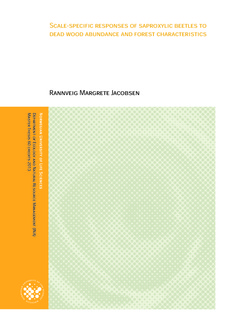| dc.description.abstract | Insects constitute a major part of global biodiversity. Saproxylic insects seem to be adversely affected by forest management due to the low volume of dead wood in traditionally managed forests. Studies of the relation between species richness of saproxylic insects and dead wood volume have been inconsistent with regard to spatial scale, and multiscale studies have found that this relation can differ depending on scale. Finding the right scale for dead wood surveys will allow for consistent research and management advice.
In this study, dead wood was surveyed at sample sites spread across two relatively large areas in southeast Norway. Mean dead wood volume per ha was calculated for the area surrounding insect sample sites within three different radii; 1 km, 2 km and 3 km. Beetles (Coleoptera) were sampled from fresh aspen (Populus tremula L.) dead wood. The present study is part of a larger project, "Effect of Forestry Biodiversity Actions", involving several partners. Dead wood volume in general was only significant to saproxylic beetle species richness at the smallest spatial scale, the 1 km radius. However, dead wood of specific categories such as early decay or aspen dead wood had positive correlations for the 2 km radius. No dead wood categories were significant at the largest scale, the 3 km radius.
Variables describing the forest surrounding the insect sample sites were extracted from digital maps for the three different radii. Several of these map-derived forest variables were correlated with saproxylic species richness. The variable describing area of forest with much deciduous wood was the strongest predictor for species richness of aspen associated saproxylic insects. The map-derived variables for abundance of deciduous wood in the surrounding forest were correlated with field data of abundance of aspen dead wood. Furthermore, significantly larger volumes of dead wood were registered in the field at survey sites that were located in forests with higher volume of living trees according to the digital maps.
Forest volume is recorded regularly and nationwide in many countries and made available as digital maps. Dead wood surveys are time-consuming, which tends to limit their scale. Forest volume could be used as a landscape-specific proxy for dead wood volume. This would enable large multiscale studies of the scale-specific response of saproxylic insect species to substrate abundance, which might lead to determination of ecologically relevant spatial scales for dead wood surveys used in studies of saproxylic insects. | no_NO |
